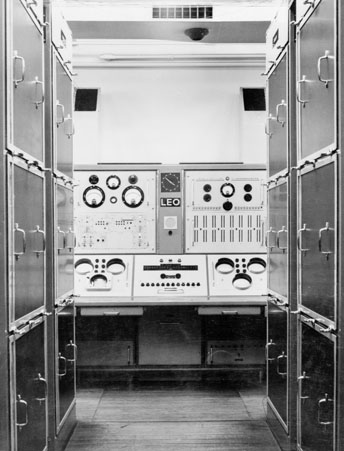Today (17 November) marks the 63rd anniversary of the LEO 1 (Lyons Electronic Office 1) computer, the first computer to be used in the workplace.
In 1950 if you fancied a cup of tea or a piece of cake you might have gone to a Lyons tea shop. J Lyons & Company ran tea shops across Britain. But the company was also interested in improving the way its work was managed and conducted, so it decided to build a computer that could support the collection and analysis of this information. Brought to life on 17 November 1951, LEO I played a crucial role in the development of a new computer age.
Working with the team at the University of Cambridge that had built the EDSAC computer in 1949, Lyons developed the LEO I, assembling it at the Lyons main factory building in West London. The computer ran its first program on 5 September 1951, valuing the cost of goods that came out of the bakeries.

The company LEO Computers Ltd was formed in 1954 and went on to build LEO II and LEO III. These were installed in many British offices including those of Ford, Customs and Excise, the Inland Revenue and the Post Office. The later models were exported as far as Australia and South Africa.
You can find out more about the LEO computer in our Information Age gallery, which looks at the last 200 years of how communications technology has transformed our lives.